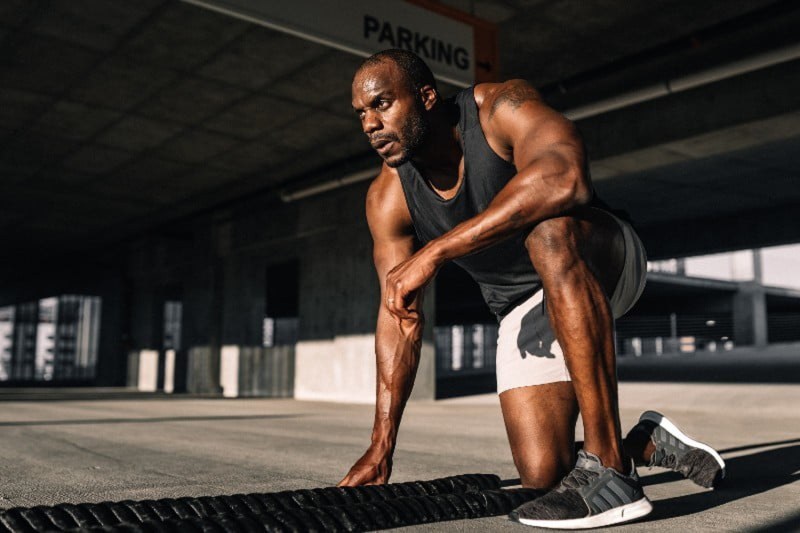
While there are an endless amount of workout options out there for you, we have compiled the ideal components of at home workouts to help you get buff no matter where you are! All you need is a healthy mix of strength training and cardio to help you lean out while building muscle.
Using the body’s weight to build brawn not only makes it easier to work out at home and on the road but also employs a variety of muscle groups. This establishes an advantage to lifting weights, which is meant to isolate instead of incorporate muscle groups.
So get your workout gear on, lay out a mat or soft towel, grab another rag to mop up sweat, and let’s hop in with some weight-free exercises that will encourage a greater vigor in your body and spirit in the comfort of your home or hotel room.

Warm Up
Jumping into heavy lifting with cold muscles is a great recipe for injury. Make sure that you warm up for five to ten minutes, incorporating at least two to three sets of at least two to three of these activities to get your body ready to lift.
Jumping Jacks
We all remember jumping jacks, right? Begin with your feet close together and hands and arms loose at your sides. Separate the feet by hopping laterally while bringing your hands together at the top of the head, then hop again to your original position.
Repeat five to 10 times.
Knee Hugs
These help to limber legs, knees, and hip flexors. From a standing position, bring one leg up and hug it to the chest, and step it forward. Step forward and repeat with the other leg.
Repeat five to 10 times with each leg.
Lunges
Continuing to warm up your legs and hip flexors, take a large step forward. Keeping your front lower leg straight, bend into your rear leg, lowering the knee to just above the floor. Step forward and either straighten up to standing or bring the other leg all the way through to bend on the opposite side.
Repeat five to 10 times with each side.
Arm Circles
Now that your legs and hips are warming, it's time to get the top involved. Arm circles are exactly like they sound: Twirl each arm forward, one after the other, in a wide circle to get blood and pliancy flow into your shoulders and rotator cuffs.
Repeat five to 10 times on each side and reverse the action five to 10 times as well.
Torso Twists
Again, self-explanatory — bring your elbows up toward your shoulders and (carefully) twist your torso to the right and around to the left. This will help get the chest, back, and spine ready to work.
Repeat five to 10 times on each side.
Inch Worms
Inch worms will bring together the torso and the legs to get your back, shoulders, and hips engaged and loosened. Simply put yourself in a plank position, hands on the floor, shoulder-width apart, feet slightly closer. Then slowly bring your rear in the air as you walk your feet toward your hands, keeping your elbows and knees as straight as possible. After your feet are close to your hands, walk back down to a plank again. Repeat five to 10 times.
Get Sweaty
Now that you’re warm, it’s time to get down to it. Again, these exercises tend to incorporate several muscle groups at once as you’ll be using the body’s weight to balance and exert your muscles.
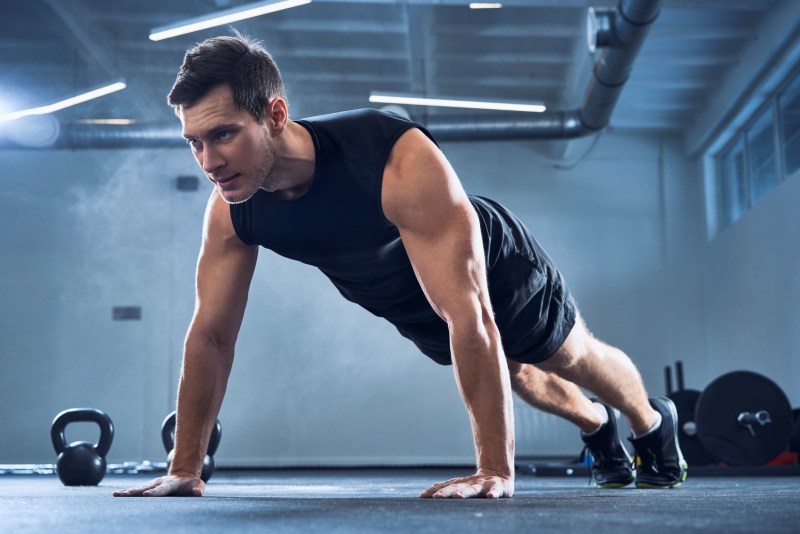
Push-Ups
Welcome back to basic gym class. Push-ups are always a central part of weightless workouts because they engage almost all upper body muscles if done correctly.
Step 1: Starting in a high-plank position, place your hands shoulder-width apart. Splay your middle fingers, pointing toward 12 o’clock.
Step 2: Bend your elbows and lower toward the floor, keeping your elbows at about a 45-degree angle to your body and your rear parallel to the ground.
Step 3: When your chest or chin brushes the floor, press your body upward and away from the floor, keeping your core tight and not sagging with your lower back.
Step 4: When your elbows are fully extended, and your body is back in a high plank position, that’s one rep.
Step 5: Complete ten to 15 reps of three sets with 30 to 60 seconds of rest in between.
Step 6: For an extra challenge, there is a seemingly endless variety of push-up exercises to hit different parts of the upper body — Spider-Mans, diamond push-ups, incline and declines, wide grip, close grip, and so on.
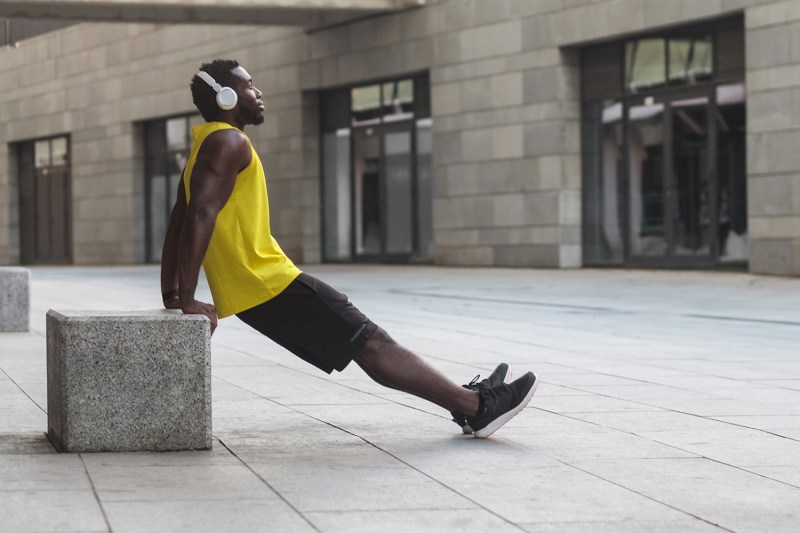
Dips
Dips will burn the triceps and shoulders, forcing the arms to lower and lift much of your torso and lower leg weight.
Step 1: Face away from a chair or a bench, and place the heels of both hands shoulder-width apart. Extend your legs out in front of you, knees locked.
Step 2: Slowly lower your body by flexing at the elbows until your forearm creates a 90-degree angle at the elbow.
Step 3: Using your triceps, push yourself back to the starting position when your arms are straight.
Step 4: Complete ten to 15 reps of three sets with 30 to 60 seconds of rest in between.
Step 5: For an extra challenge, doing dips more slowly and deliberately will challenge the muscles more. You can also add reps. If you can balance it, place a weight on your abdomen/pelvic area to push the triceps more.
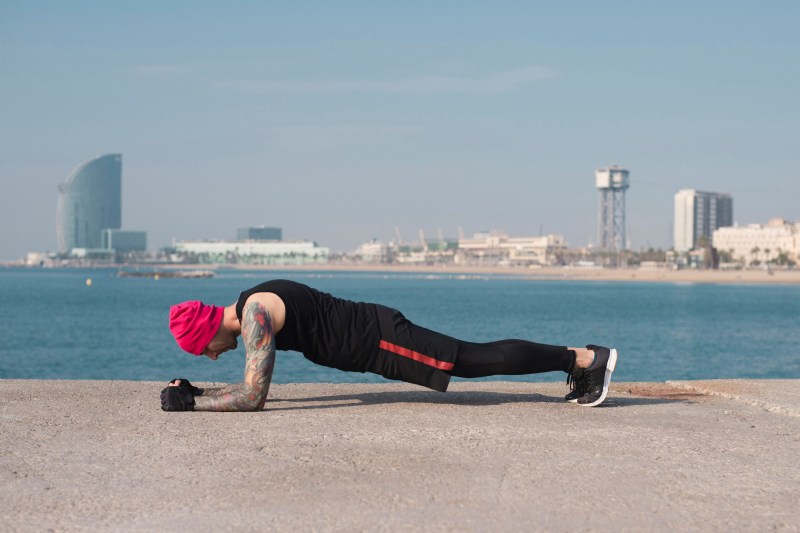
Forearm Planks
Planks are a perfect exercise to get your abs and obliques shredded. And all it takes is holding your body up parallel to the floor!
Step 1: Place your forearms on the floor, elbows aligned below shoulders, and arms parallel to the torso, shoulder width apart. If flat palms bother your wrists, clasp your hands together.
Step 2: Hold your body up for anywhere from 30 to 120 seconds.
Step 3: Complete three sets with 30 to 60 seconds of rest in between.
Step 4: For an extra challenge, there are a number of plank modifications that will get your heart pumping and your core burning. Hold your body with your hands instead of your elbows, hop and splay your legs, or lift each arm to the sky for a number of reps.
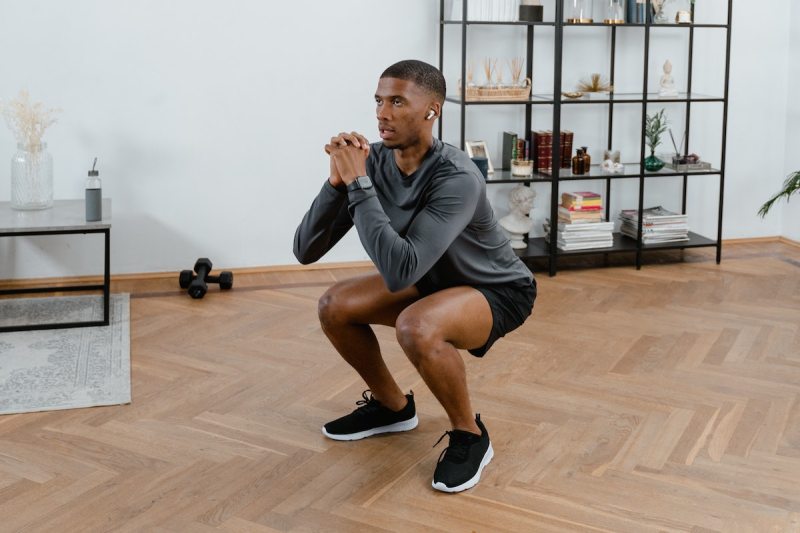
Squats
Like push-ups, squats are an excellent, classic workout to engage your entire lower body while burning upper micro-muscles as you maintain stability.
Step 1: Begin with your feet shoulder-width apart, knees bent, hips loose, and arms bent at the elbow (or straight out in front of you).
Step 2: Bend your knees, keep your rear back, and sit into your hips.
Step 3: Go down as far as you can (try to get at least even with the knees), then push back into your starting position.
Step 4: Keep your head up (facing forward), elbows at your side, and back straight throughout the move.
Step 5: Complete ten to 15 reps of three sets with 30 to 60 seconds of rest in between.
Step 6: As your lower body gets stronger, you’ll want to challenge it more. Try holding your arms straight out in front of you like a mummy, and hold weights at your side or a heavy object in front of you as you squat and stand. There are a number of different squat exercises you can try as you get more into physical exercise. One of them, in fact, is next.
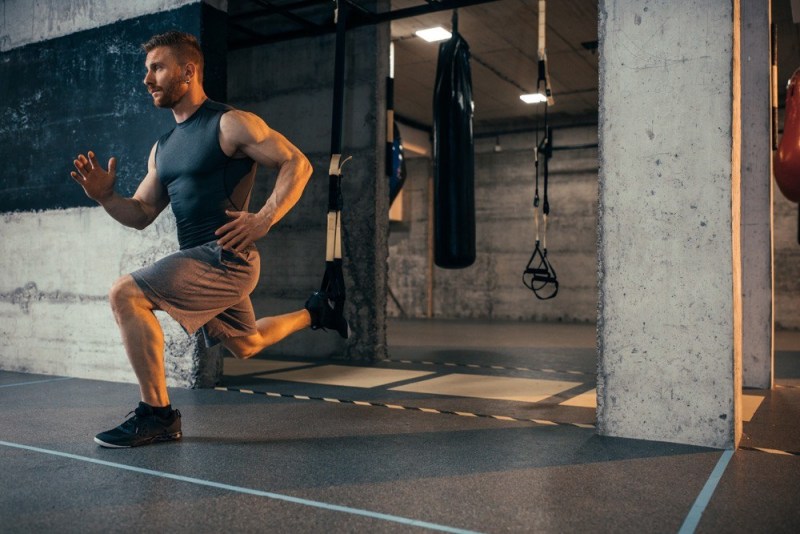
Split Squats
Split squats will burn the core as you keep your torso straight and burn quads, hamstrings, and glutes.
Step 1: Stand facing away from a bench or chair with one foot resting on it, toes down. Place your other foot about a large step in front of you.
Step 2: Squat down into your front leg until the knee of your trailing leg almost touches the floor. Make sure that your front leg can stay relatively straight. Adjust if needed.
Step 3: Push up through your front foot, returning to the start position.
Step 4: Complete ten to 15 reps with each leg. Do three sets with 30 to 60 seconds of rest in between.
Step 5: To elevate the muscular challenge, hold a set of weights, books, bags, or anything with extra weight at your sides as you move up and down. As you see in the picture, you can also elevate your back foot to practice more balance and get more burn.
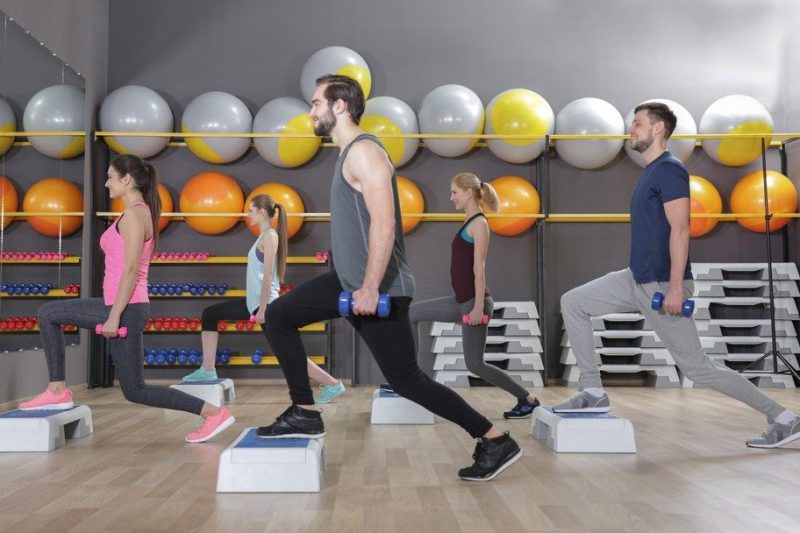
Step-Ups
Step-ups will burn your lower half and engage your core as you balance for stability.
Step 1: Start standing in front of a stable knee-height chair or bench, feet together.
Step 2: Step up onto the chair with your right foot, pushing through your heel and driving your left knee toward your chest.
Step 3: Carefully lower your left leg down, stepping backward in a smooth motion. Repeat with a step-up with your left leg.
Step 4: Complete ten to 15 reps with each leg, either alternating by rep or by set. Do three sets with 30 to 60 seconds of rest in between.
Step 5: Too easy? Grab a set of weights, books, bags, or anything with a bit of heft to hold at your sides as you complete the exercise.
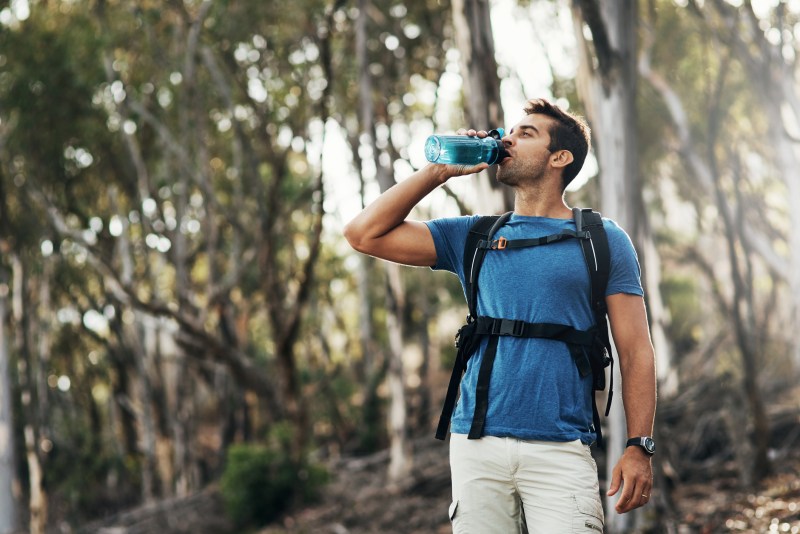
Cool Down
Cooling down is an integral part of your workout as well. Your muscles are now tight and swollen and more prone to spasms. Repeat some of the warmup exercises or do some dance and/or yoga stretches to get flexed striated tissue to ease back to normal.
Make a Plan
Working out is wonderful for the body, and getting into a routine will satisfy the mind.
If you’re just starting out, set a goal for two to three days of weight training, two days of cardio, and two days of rest per week. As you get stronger, you add a weight day and try splitting between upper- and lower-body workouts. Don’t get too crazy, though, or your body will break down without building strength. Be sure to reserve at least two rest days per week for recovery.
Working out begins with a first step, whether you're at home, on the road, or at the gym. The body needs action to release important calming and mood-enhancing hormones, and the mind needs physical focus, even for the greatest desk warriors out there among us.
Always remember: Improving your day is just a workout away.



